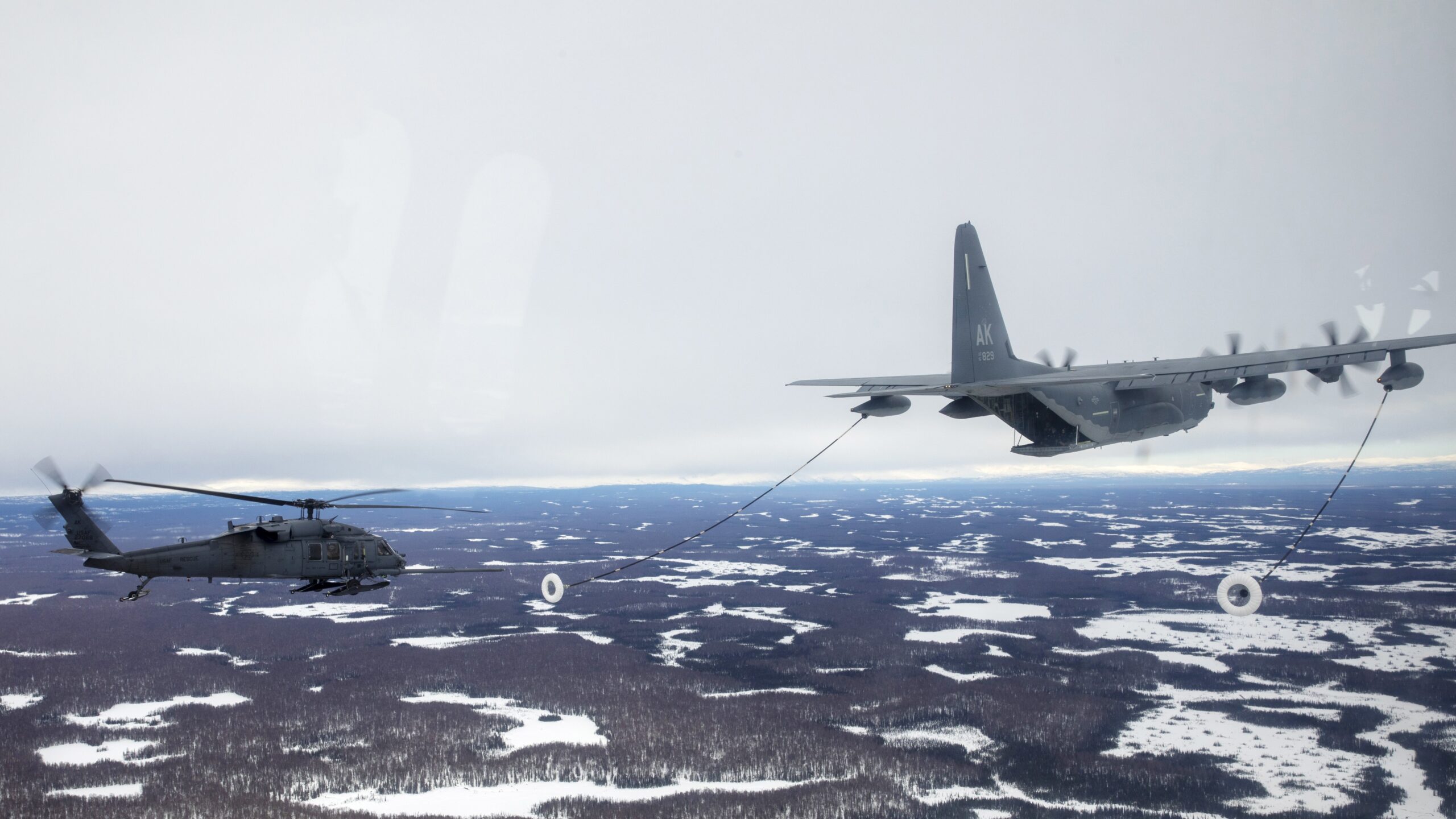

Alaska Air National Guardsmen carried out a pair of recovery missions earlier this month rescuing three people stranded in remote parts of the state. In both cases, the weather was too rough, with snow and severe conditions requiring the need of military assistance.
Both missions took place in the span of 24 hours. In the first one, on April 4, the Alaska Rescue Coordination Center at Joint Base Elmendorf-Richardson received a request from Nome’s Norton Sound Regional Hospital. A new mother and her premature baby from nearby Koyuk were in need of more extensive medical care than was available. Koyuk, located at the base of an inlet in the state’s north, has a population of just over 300 according to census reports.
The Alaska Air National Guard’s 176th Wing responded to a request. Members of the 212th Rescue Squadron Guardian Angels were transported by a 210th Rescue Squadron HH-60G Pave Hawk and a 211th Rescue Squadron HC-130J Combat King II.
The 176th Wing, based out of Joint Base Elmendorf-Richardson in Anchorage, has three squadrons focused on search and rescue operations. It’s frequently called upon to assist people lost or in need of medical evacuation in the state. In the mission to Nome, members of the three squadrons traveled from Anchorage to Nome; incidentally, the Guardian Angels were racing the path that competitors in the Iditarod dog sled race do annually.
The recovery mission took several steps, with the crews aboard the helicopter and the plane taking the lead at different stages. The 211th’s HC-130J refueled the 210th’s Pave Hawk along the route. The helicopter reached Koyuk and crews then traveled by car to the mother and baby. The helicopter then flew south to the town of Unalakleet, where the HC-130J had landed. The plane then ferried the patients back to Anchorage, where they were taken to a hospital.
Subscribe to Task & Purpose Today. Get the latest military news and culture in your inbox daily.
The next day, the 176th Wing was given a request for assistance by Alaska State Troopers. A snowmachine rider broke a leg near Talkeetna, not far from the Susitna River, and needed aerial evacuation. Guardian Angels took off on an HH-60 to the area. The rescue team were hoisted down to the ground, checking on the injured man before getting him onto the helicopter. He was taken back to Joint Base Elmendorf-Richardson and then to a hospital.
“Once again, the Rescue Triad has demonstrated their boundless dedication to our fellow Alaskans moving long distances and through extreme weather to get to those who need help,” Brig. Gen. Anthony Stratton, leader of the 176th Wing, said in a statement on the two rescues. “Guardian Angels, HH-60 and HC-130 crew members, RCC mission controllers, maintainers and other 176th Wing Airmen stand alert 24/7/365 to answer the call when we’re needed most.”
Given the rugged conditions and extreme weather in Alaska, many rescues need to be conducted by air to reach areas not accessible by the ground. In many of those cases, when weather is too rough, assistance from the Air National Guard is needed for backcountry rescues.
The latest on Task & Purpose
- Former Army base warns of grenades on local trails
- ‘Black Hawk Down’ Ranger veteran awarded Silver Star
- The Air Force’s new $60 million Special Warfare center honors a fallen pararescueman
- Former Air National Guardsman may have defected to Russia
- Marine battalion commander fired for “loss of trust and confidence”